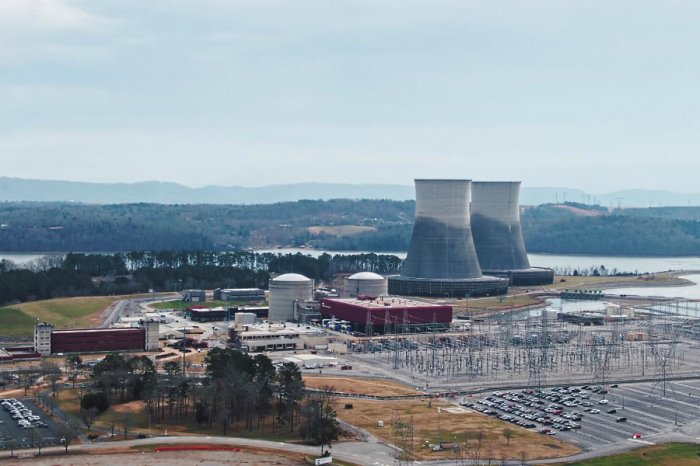To consider an application for financing, fill out the form and send it to us by e-mail along with the project brief, or contact our experts
Today, financing for sustainable urban development projects has a strong environmental component while providing multiple economic and social benefits to residents.
In recent decades, European and international discussions have given rise to new concepts of sustainable urban development that require significant sources of long-term financial resources, such as investment loans.
These tools are being actively developed by the joint efforts of representatives of the public, private and municipal sectors.
These capital-intensive investment projects focus on the construction of sustainable urban infrastructure that will improve the quality of the living environment and address the complex set of economic, social, environmental, demographic and other challenges.
Their feature is a long payback period, which requires professional planning and the use of innovative financial models with reliable support from the authorities.
Planning for the sustainable development of cities and the construction of a sustainable urban environment currently requires an increase in the share of capital investments of municipalities and diversification of funding sources.
Given the decline in government funding for public projects, an important trend in project finance in this context is to focus on innovative financial models, attract private capital, enhance cooperation with international financial institutions and enter into external capital markets to attract additional investment.
Innovative tools for financing sustainable urban projects
Investments in sustainable urban environments usually include financial engineering tools, which are most often implemented in the form of project finance and public-private partnerships.Both forms are especially relevant for European cities, given their many advantages over grant funding and the benefits from their implementation.
International practice shows that public-private partnership is the leading tool for financing investments in the construction of public infrastructure facilities and the provision of related services in the absence of the necessary resources in the state and municipal budgets.
Environmental protection as an integral part of public policy at the local, national and international level requires close cooperation between the public and private sectors to create sustainable assets in cities and municipalities.
These assets must meet the following requirements:
• Promoting economic growth.
• Improving the quality of life of residents.
• High level of ergonomics and safety of assets.
• Minimal financial burden on the local budget.
• Rational use of natural resources.
• Limited environmental impact.
Funding for sustainable urban projects can cover projects such as green energy facilities, transportation infrastructure, waste management systems, and more.
The budget for such projects varies, ranging from tens of thousands of euros for the construction of a bike rack to hundreds of millions of euros for solar power plants. Accordingly, the financial needs of municipalities and the role of project finance schemes in such initiatives also varies.
Project finance
Project finance is a method of financing sustainable urban projects, public infrastructure and public service projects in which the source of debt repayment and return on equity involved in the project is the cash flows generated by this project.This concept can be applied in the process of financing investment projects carried out within the framework of financing the development of municipal infrastructure. A specific feature of project finance is a very high share of loans in the financial structure (up to 90% of the project cost). This requires the establishment of an independent company, referred to as a special purpose vehicle (SPV) or special purpose company (SPC).
SPV/SPC acts as a borrower and is fully responsible for the debts of the project.
Consequently, project sponsors, including the municipality, are not liable for their assets, and the implementation of a capital-intensive project does not affect their creditworthiness. The sole purpose of establishing companies of this type is the implementation of a specific project, and their names often duplicate the name of the corresponding urban project.
Other entities involved in project finance for sustainable urban projects are listed below:
• Sponsors. In essence, these are the initiators of the project (private companies, organizations, municipal enterprises or local government) who promote the investment project and receive support from the authorities and the local community or other key organizations. Sponsors also ensure the integration of the activities of all subjects of the project finance, as well as proper control over the implementation of the project.
• Municipal authorities. The local government takes responsibility for creating the proper legal conditions for the proper implementation of investments;
• Lenders. When financing urban projects, the lenders are most often local banking institutions that provide financial support directly to the Special Purpose Vehicle.
• General contractor. Project finance schemes usually include a single general contractor who, alone or in cooperation with subcontractors, is responsible for launching the project (such projects may be carried out on the basis of an EPC contract). It should be noted here that the general contractor can simultaneously act as a sponsor of the project.
• Operator. The project should be managed and maintained by a specialized company with relevant experience, which, after the completion of the project, will take over the full range of tasks for managing this project, including the current operation of the facility. The operator can be a project sponsor, a specialized municipal company or a contractor.

During the implementation of an urban project using PF schemes, other entities may also participate, which depends on the specifics of the investment.
This include manufacturers and suppliers of certain goods or equipment, large municipal customers who enter into long-term contracts in this area, as well as insurance companies (insurance policies are usually required to minimize the risk of investment failure).
Properly organized project finance makes it possible to create a modern municipal infrastructure using long-term funds and the experience of the private sector. In this way, the quality of services provided and the overall efficiency of projects such as power grids, water supply facilities, wastewater treatment plants and even residential buildings can be improved.
At the same time, each PF participant specializes in a certain area, such as attracting resources, risk assessment, construction and engineering, infrastructure management, and more.
The high level of specialization and experience of the participants undoubtedly contribute to improving the accuracy of decisions made during the implementation of the project.
This can be explained by the fact that each of the players participating in the project finance scheme takes on an acceptable risk of failure while minimizing the risk of the project as a whole. Therefore, two forms of project finance can be distinguished, based on non-recourse and recourse debt.
In the case of non-recourse funding, the project initiators are liable only to the extent of the contributions made. Recourse financing consists in maintaining a reasonable level of risk for lenders and, as a result, reducing it compared to traditional methods of using external capital. A municipality that is unable to obtain a loan for a particular project due to a high risk of loss of liquidity may obtain funds for that project using the project finance method.
The importance of this type of financing for sustainable urban development projects is increasing along with the growing interest in the concept of public-private partnership, which contributes to the involvement of private capital in public initiatives. Using flexible project finance schemes, municipalities have additional opportunities to develop the structure of the local economy and increase control over private enterprises operating de facto in the public sector.
Public-private partnership
Public-private partnership (PPP) mechanisms tend to be used in the most capital-intensive projects, which would otherwise be a heavy burden on the municipal budget.When it comes to large urban projects, experts identify the following main advantages and potential benefits of PPP:
• Effective way to attract private capital to the public sector for the implementation of projects of public importance.
• Additional opportunity to accelerate social, economic, infrastructural and environmental transformations in local communities.
• Important tool for improving the infrastructure and quality of local public services (transport, security, healthcare, etc.)
• Basis for better planning and evaluation of investment projects, which is explained by the strict control of the private sector over the spending of funds.
• Participation of a private partner at all stages of the project leads to a simplification of the engineering stage, construction, financing, maintenance and operation of the facility.
• Improving the efficiency of investment projects.
• Better management of facilities and provision of better services of public interest.
• Transfer of experience and knowledge from the private sector.
• Rational distribution of risks.
• Growth of innovation.
A promising basis for achieving a balance of interests between the public and private sectors and the implementation of successful public-private projects is project finance.
Benefits of PF for urban projects are listed below:
• Combination of various financial instruments and forms of investment project financing.
• Return of the attracted capital depends on the future cash flows generated by the project.
• Pooling of significant financial, material and human resources that cannot be achieved through traditional financial mechanisms.
Considering the features, advantages and benefits of public-private partnerships and project finance listed above, they will remain a priority for the successful implementation of innovative urban development projects in the foreseeable future.
Along with traditional financing mechanisms, PF schemes based on public-private partnerships contribute to the diversification and strengthening of the capital base of municipalities in the context of sustainable development.
For example, JESSICA (Joint European Support for Sustainable Investment in City Areas) played an important role in increasing the sustainability of European cities at the beginning of the 21st century. This is a joint initiative of the European Commission and the European Investment Bank, which aims to allocate Structural Funds (grant financing) to municipalities that have submitted relevant sustainable development programs.

Financial support for the innovative development of municipalities could also be provided in the form of long-term loans and loan guarantees, depending on the needs of a particular city.
In this way, the EU supports the sustainable development of cities, including the development of transport, water and energy infrastructure. European funding is also available to create favorable platforms for small innovative companies, university and school buildings, sports facilities, exhibition centers, recreation and entertainment facilities. The subject of special attention for European officials are projects to improve energy efficiency and develop green energy.
However, grant financing and concessional loans are not available in all countries, and not every project can benefit from international support.
If you are looking for an affordable source of funds for sustainable urban development projects, contact Link Bridge Financial LTDA and leave a request for a consultation. We provide long-term financing for large projects around the world on favorable terms, accompanying our clients at all stages of project implementation, including financial modeling, project finance, engineering, construction, O & M etc.
Green bonds financing of sustainable projects
One of the most common forms of investment project financing by municipalities is direct financing from the capital market through the issuance of debt instruments such as bonds.Since the 2000s, green bonds have been an important innovation in the development of municipal debt instruments, introduced in Europe with the first issuances by public institutions such as the EIB and the World Bank, followed by some municipalities to finance sustainable urban development projects.
According to the United Nations Development Program (UNDP), green bonds are innovative financial instruments for mobilizing resources from local and international capital markets for projects that bring environmental benefits to society.
The main difference between bonds is that they are guaranteed by the cash flows of projects that bring environmental benefits.
According to current sustainability requirements, environmental projects are classified into several categories related to climate change, depletion of natural resources, pollution of water, air and soil, etc. In most cases, these urban projects are aimed at promoting renewable energy, energy efficiency, control pollution and green buildings. According to analysts, in recent years the green bond market has grown exponentially from $13 billion in 2013 to $500 billion in 2021.
The growing interest in innovative bonds from issuers, investors and intermediaries requires the application of standards for assessing the environmental friendliness of bonds. The main tool that allows investors and intermediaries to assess the environmental friendliness of bonds is the Climate Bond Standard and Certification Scheme (currently Standard 3.0).
Certification confirms that a specific investment project brings significant environmental benefits in accordance with the eligibility criteria.
Some of the current requirements are listed below:
• Clear criteria for how financial flows are used and monitored within a particular project.
• Eligibility criteria for projects with low CO2 emissions and minimal environmental impact.
• Guarantee system with independent verifiers and strict procedures.
• Certification by an independent commission.
In all cases, local laws and regulations remain a priority in the preparation and issuance of bonds. The existing recommendations, principles and standards for issuing green bonds that promote sustainable development are voluntary recommendations and practices for wide use by various market participants.
Their role can be summarized as follows:
• Help issuers move towards more sustainable business models and launch sustainable financing through a green bond financial models.
• Ensuring that investors and intermediaries have access to disclosed information regarding the real positive impact of investments and the movement of the market in the direction of certain environmental or social expectations.
• Promoting transparency in cash flow management, as well as transparency in assessing the expected environmental impact of the project, supported by quantitative and qualitative indicators (reduction of harmful CO2 emissions, water quality indicators, increase in the number of citizens with access to a green environment, and others).
• Building confidence in various stakeholder groups.
In addition to traditional green bonds, there are also special instruments on the debt instruments market. For example, so-called pure play bonds issued by organizations that are fully committed to environmentally sustainable activities.
According to the Climate Bond Initiative (CBI), the green bond market currently has thousands of issuers.

Capital raised through bonds is used to finance low-carbon and sustainable infrastructure in areas such as transport, energy generation and transmission, building retrofits, industrial energy efficiency, water resources, pollution and waste control, agriculture and forestry.
Further development of the bond market based on the distribution of capital is associated with alternative financial instruments.
These are Social Bonds and Sustainable Bonds, which refer to bonds where project profits will be used solely to finance social projects or a combination of environmental and social projects, respectively.
The Green Bond Principles (GBP), the Social Bond Principles (SBP) and the Sustainability Bond Guidelines (SBG) proposed by the International Capital Markets Association (ICMA) contain the following requirements.
These requirements are applicable to sustainable urban projects in the current sense:
• A share of the project's income is allocated to finance other projects that have well-defined social / environmental benefits and meet the eligibility criteria in their respective categories.
• The environmental and social sustainability objectives of a particular investment instrument are consistent with the issuer's environmental sustainability strategy and policy.
• The requirements of transparency and accountability for tracking project cash flows by crediting to a sub-account or otherwise have been met.
• Recommendations are being implemented on reporting by issuers and disclosure of information on the use of the project's profits.
The global market for green, social and sustainability bonds is growing at a rapid pace, given the growing demand for funds to create assets that bring environmental, social and other benefits.
This important source of financing for sustainable urban development projects has a very wide range of applications, and further growth in debt instruments in financing projects that meet the criteria for sustainable development is expected.






















